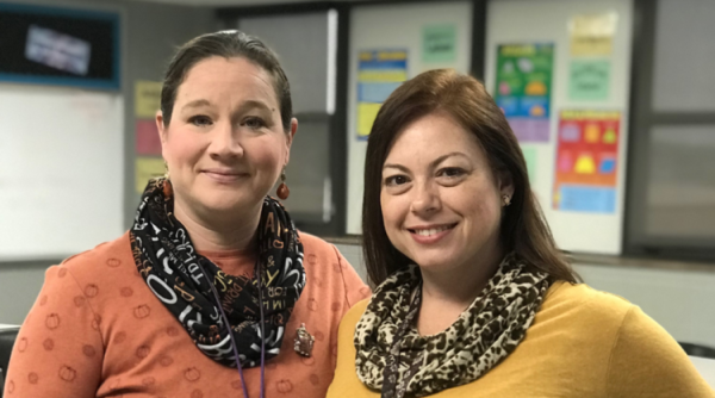To and through Algebra: Support for Educators and Students
Topics

Educators often take advantage of educational technologies as they make the shifts in instruction, teacher roles, and learning experiences that next gen learning requires. Technology should not lead the design of learning, but when educators use it to personalize and enrich learning, it has the potential to accelerate mastery of critical content and skills by all students.
Teachers need more support to help students get into and through algebra, a gatekeeper to advanced math learning required for both college and career success.
Students in many states must pass basic algebra to earn a high school diploma. Many universities require students to take algebra to enter college.
Why?
There is consensus among educators that algebra bolsters logic skills while simultaneously encouraging abstract thinking. It also prepares students for statistics and calculus, which are increasingly required for future careers.
As the language of math, algebra is often viewed as the foundational building block and gatekeeper to advanced math learning.
Without a basic grasp of algebra, future career aspirations are hindered for many students before their journey has even begun.
The Challenge for High School Administrators
The good news is that, contrary to popular opinion, the focus on STEM in K-12 education has seen an increase in students studying advanced math. According to the National Center for Education Statistics (NCES), the percentage of high school graduates that completed algebra grew from 78 percent in 2009 to 85 percent in 2019.
However, if you look a little deeper, the NCES statistics also show that the National Assessment of Educational Progress (NAEP) long-term trend for average mathematics scores has improved little since the early 2000’s and, worryingly, dropped for the first time ever in 2022.
Out-of-Field Teaching on the Rise
Some researchers assert that the rise of out-of-field teaching in U.S. high schools is a significant contributing factor to declining scores in math. An assistant professor at the University of Georgia, Richard M. Ingersoll wrote in a research article that a third of all secondary school teachers of mathematics have neither a major nor a minor in mathematics.
The problem is only expected to worsen with a chronic shortage of teachers across the board—and in math in particular.
The Role Tech-Enhanced Learning Programs Can Play in Teaching Algebra
Ed-tech is seen by many as a way for teachers to cover the math teaching gap and ease the workload. But does educational technology work in the classroom? Can it actually ease math teacher workloads so they can fill the gap—and provide more focused attention to those students who really need it?
A 2015 research article published by Hegedus, Dalton, and Tapper found the effect of replacing traditional Algebra 2 curriculum with an integrated suite of dynamic interactive software, wireless networks, and technology-enhanced curriculum demonstrated significant impact on student learning of core algebra concepts and procedures.
Exactly How Does It Help?
Building math proficiency is a lot like building a skyscraper. Strong foundations are needed before you can start adding levels.
Unlike construction managers, teachers don’t have the luxury of holding back new work until the foundations are solid. The structure of our education system with aged-based learning, fixed lesson plans, and homogenous classroom teaching means many students miss out on the math building blocks needed for advanced learning. Moreover, a plumber would never be asked to do the electrical work on a construction site, but teachers are asked to teach outside their area of expertise almost daily.
Digital math learning resources can help to bridge this gap. New Classrooms’ Teach to One Roadmaps, for example, uses carefully curated best-in-class content to deliver a personalized learning experience at scale.
It enables teachers to use the power and engagement of technology to:
- Meet each student at their starting point.
- Continually adapt lesson plans and learning pace based on individual progress.
- Teach a classroom of students the same way as if they were tutoring each student one to one.
Because Teach to One Roadmaps offers a more personal, supportive, and interactive learning experience, teachers who use it in their classrooms, even those who may be teaching out of field, are better equipped to help students become invested in their algebra learning journey. Combined with differentiated learning materials, high-quality lessons, and individualized student plans teachers can spend more time teaching rather than planning. This means students can develop the building block skills they need to learn advanced math and be more prepared for their college and career aspirations.
Photo at top of math teachers in Tulsa, Oklahoma by Neal Patel, courtesy of New Classrooms.




